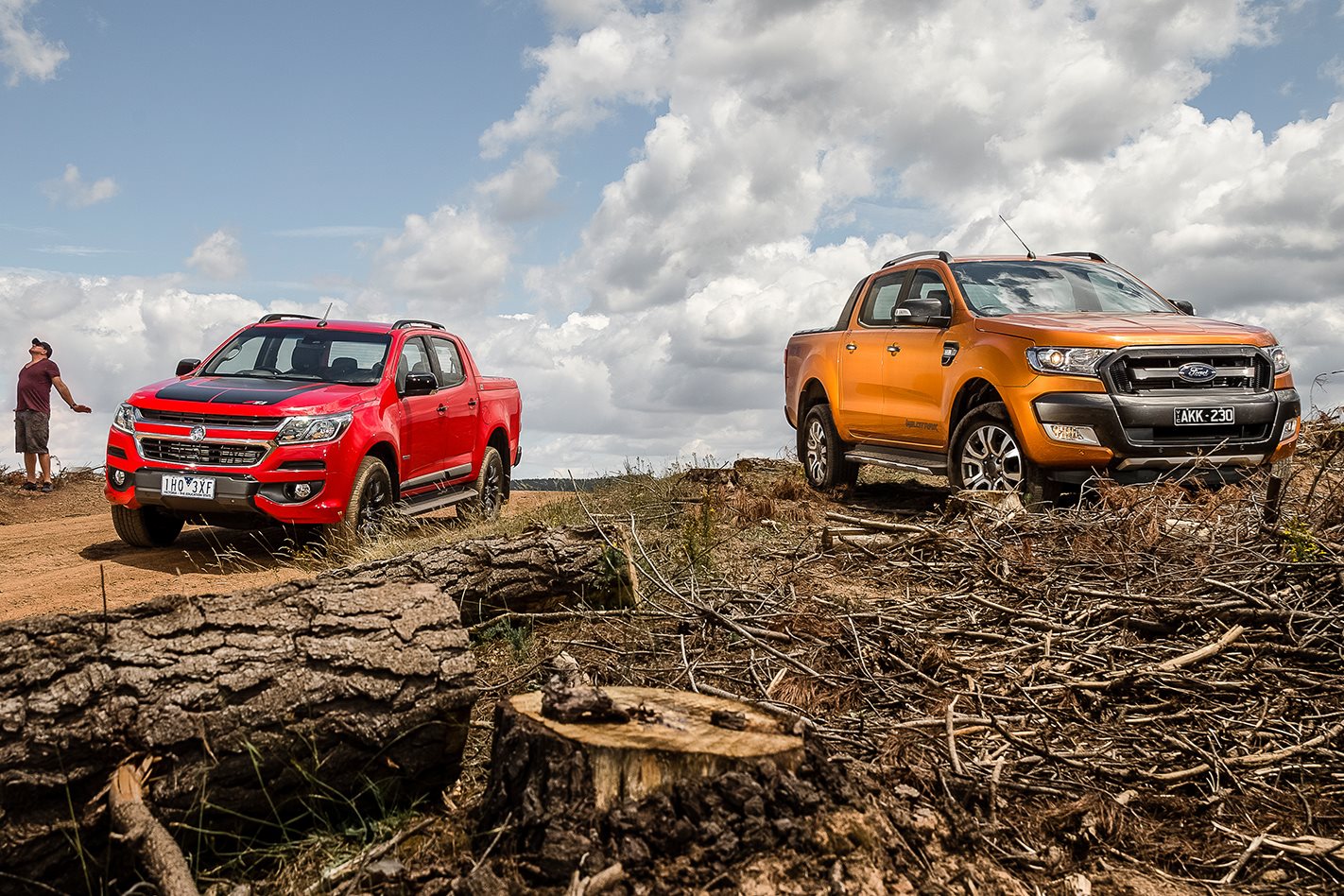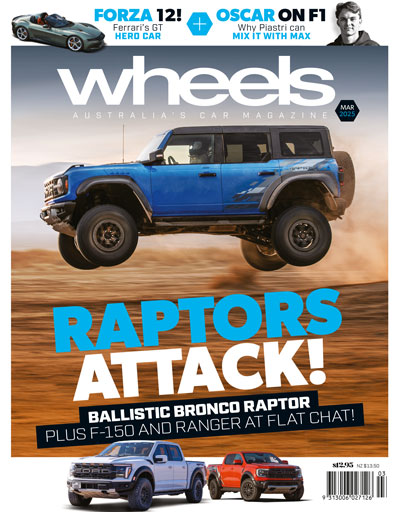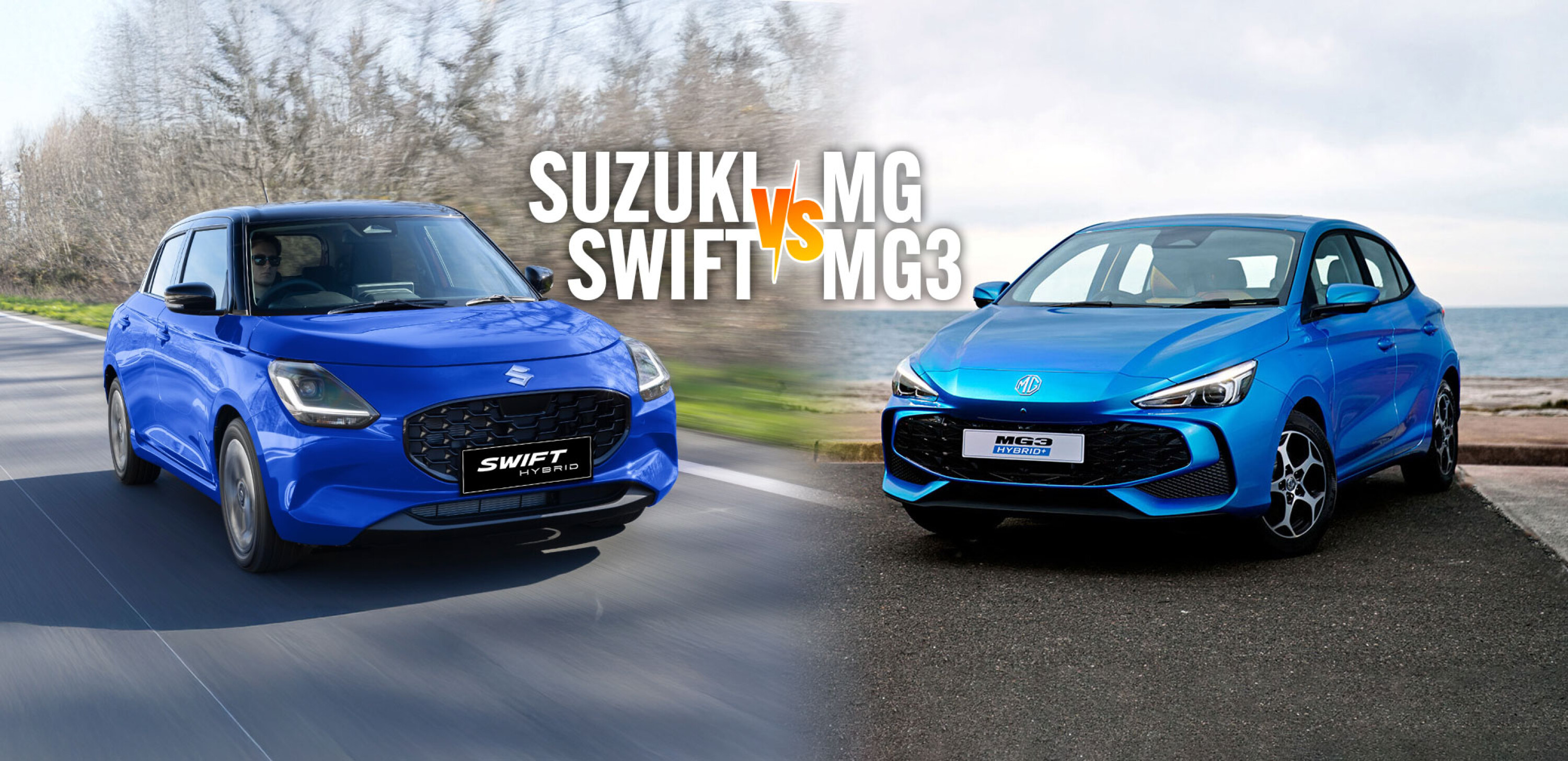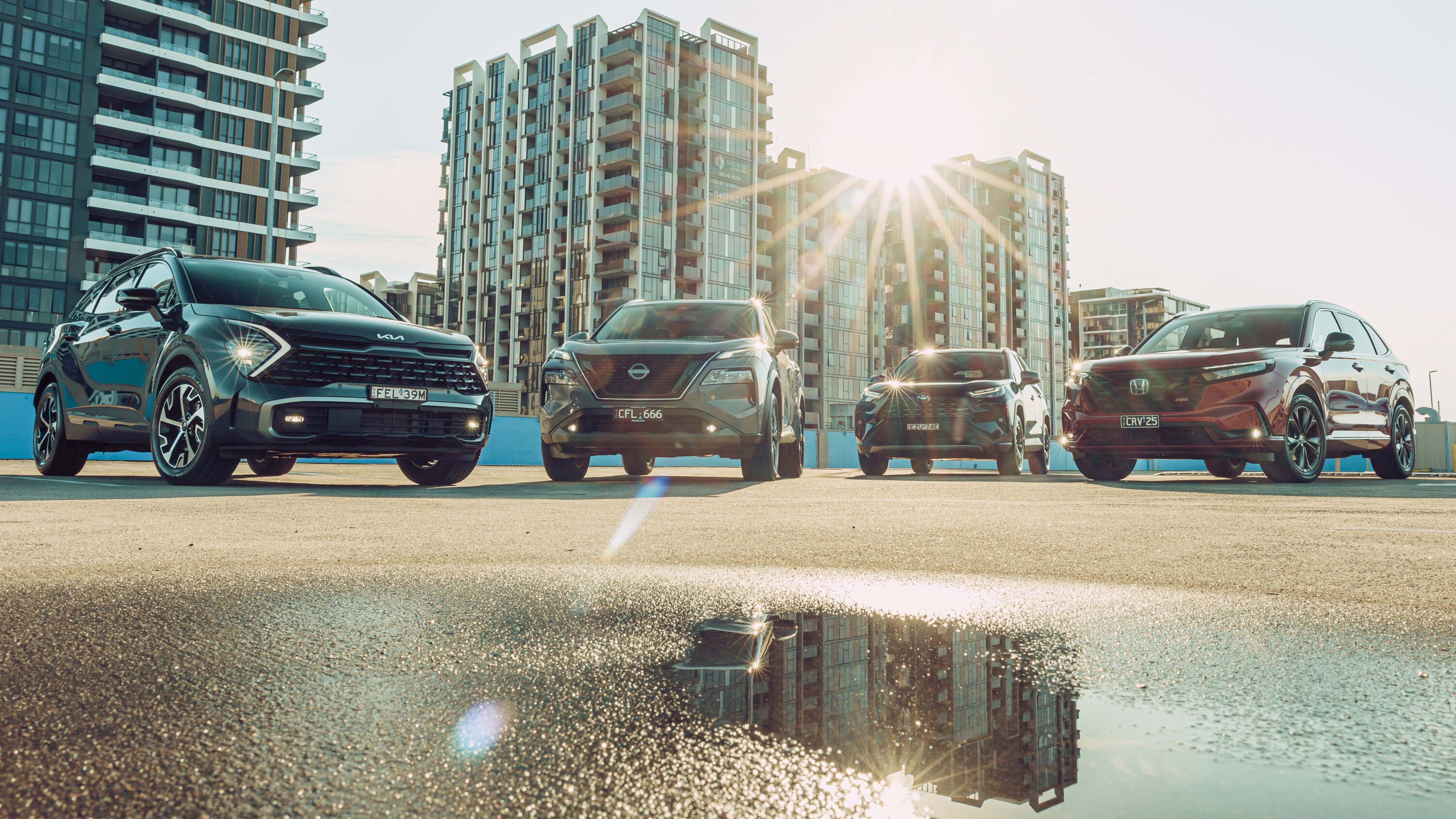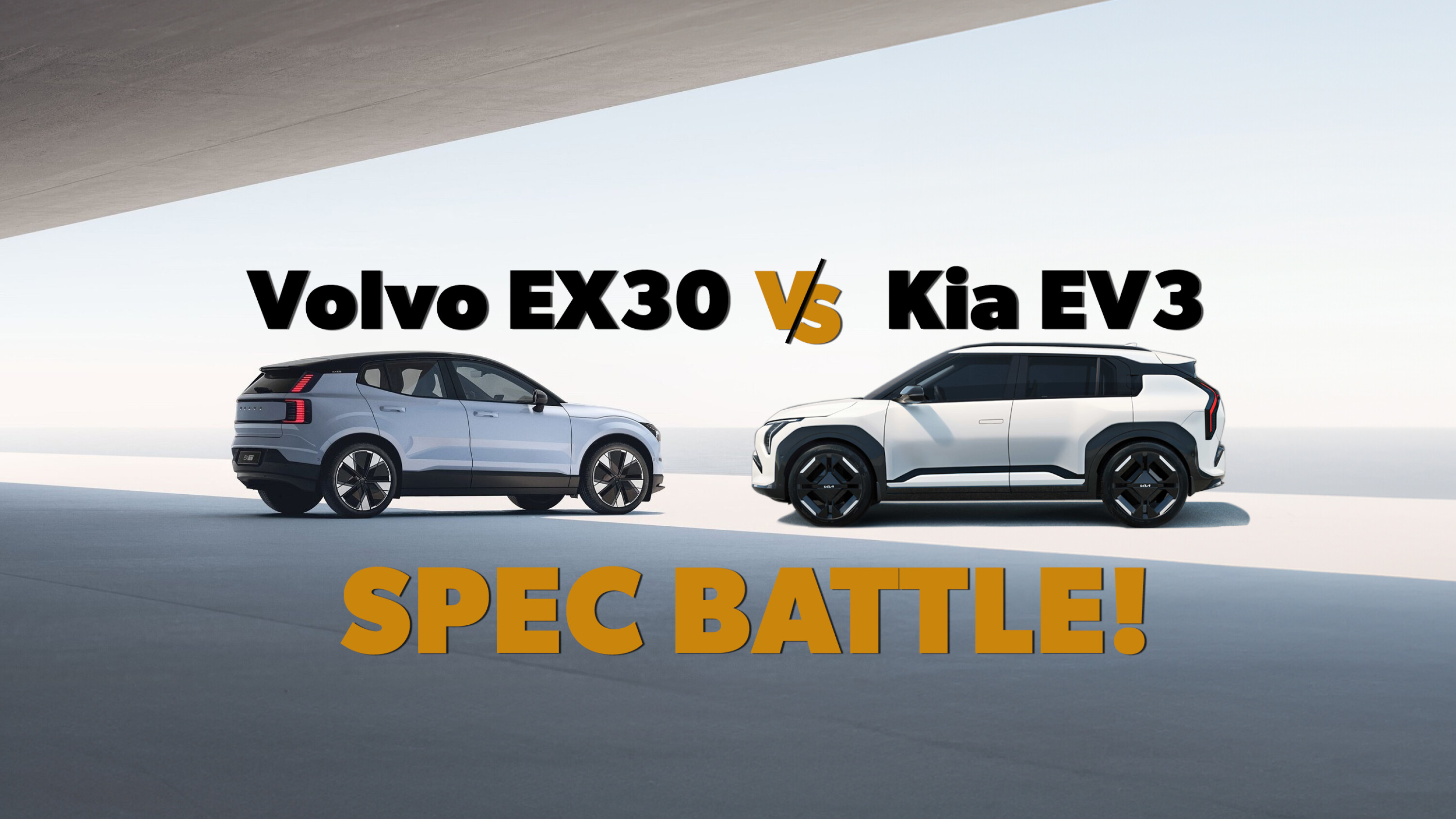JACK of all trades. It’s something many of us would love to be, kinda like any bastard who can bench press 100kg-plus, but also sing, dance, make people laugh, build a new front fence and effortlessly command a barbeque.
First published in the March 2017 issue of Wheels magazine, Australia’s most experienced and most trusted car magazine since 1953
But if we’re talking cars – or, in this case, range-topping dual-cab utes with delusions of passenger-car grandeur – trying to be all things to all people is a hard thing to master.

By 1950, it was our best-selling car. Sixty-six years later, that title is held by the separate-chassied Toyota Hilux (with 42,104 sales), leaving the once-dominant large-car class in a state of abandonment.
2017 Ford Ranger FX4 targets Hilux buyers
Want to know what Ford’s best-selling ‘car’ was in 2016? The Ranger pick-up (4×2 and 4×4) with 36,934 sales, five times more than the Blue Oval’s next biggest seller (the now-dead Territory SUV).
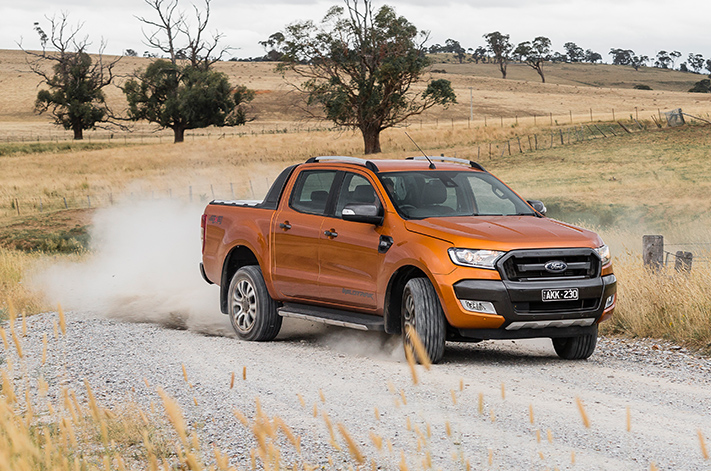
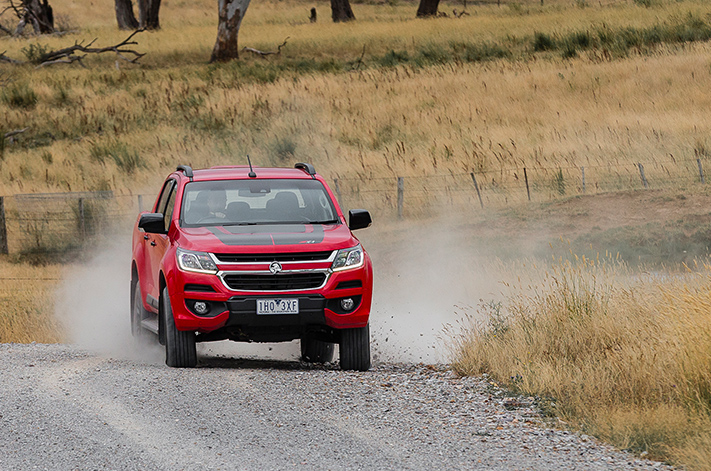
Forward collision alert, lane-departure warning, leather-appointed trim, climate control (dual-zone in the Ford), Apple CarPlay/Android Auto phone projection, factory sat-nav, electric driver’s seats (and heaters up front), 18-inch alloys, roof rails and sporty ‘sail plane’ additions garnishing the rear tray area feature on both the Colorado Z71 ($57,190) and Ranger Wildtrak ($61,790).
For its additional spend, the Wildtrak adds adaptive cruise control, a lockable roller-blind-style metal tonneau cover, 12-volt outlets in both the rear cabin and tray (perfect for refrigeration purposes), a chilled centre console bin, auto high-beam and external puddle lights, while the Colorado Z71 counters with LED daytime running lights, four auto up/down windows, a manually height-adjustable front passenger seat and some groovy 1970s black-out body decals.
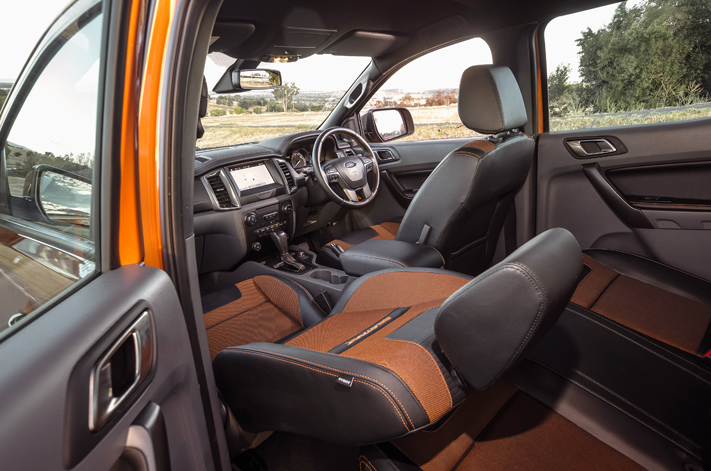
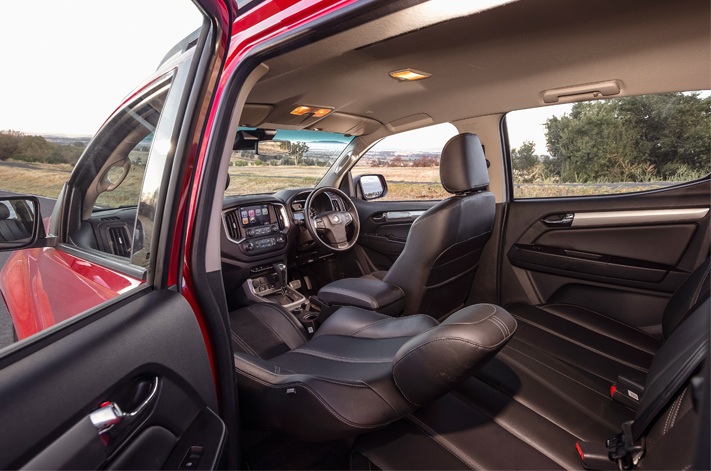
Off the line, the Holden is instantly in the game, hooking up and charging forward with positive upshifts and significantly more snot than the five-cylinder Ranger.
The Colorado’s 2.8-litre four is a more agricultural engine than the Ranger’s 3.2-litre five, with fan noise and diesel clatter at low revs, and more gravel in its voice, but there’s a sweet spot between 2800 and 3200rpm, and given the grunt on offer, it’s easy to forgive the Z71’s shoutier manner.
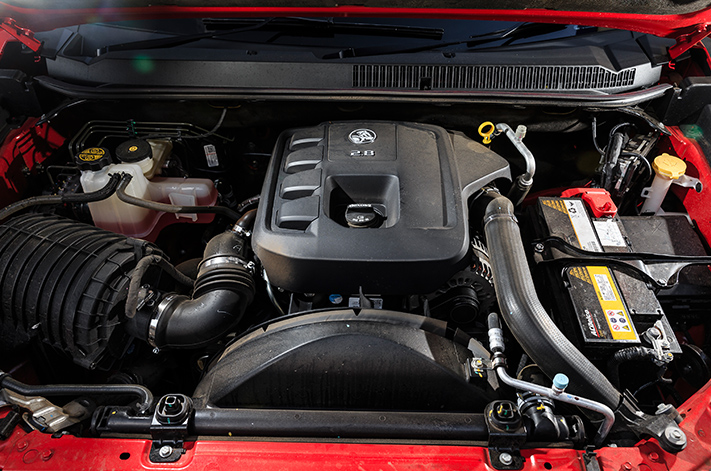
It, too, upshifts at just 3600rpm (and falls off a power-curve cliff shortly thereafter), though you can feel the Ranger’s torque-convertor slurring drive, particularly in third gear, when it should be throwing everything it has at its rear tyres, like the Colorado does.
There’s another 100kg to deal with as well, leaving the Ranger feeling slightly breathless at times, and thirstier too, drinking 1.2L/100km more than the Colorado on test.
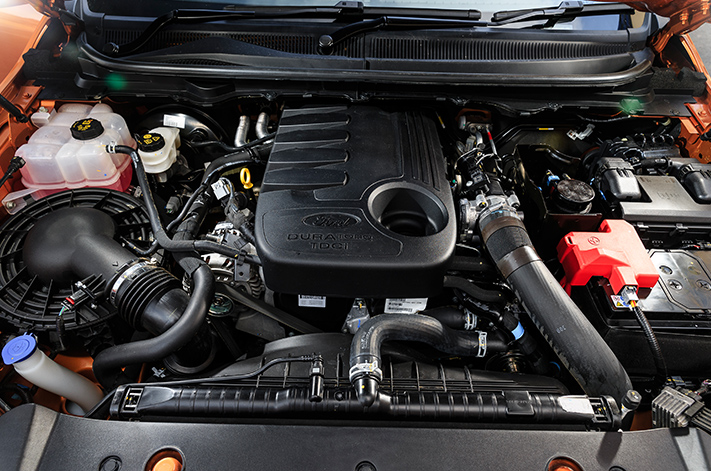
Turn the wheel and the Ford responds, immediately pointing its nose where you want, and informing its driver what the front and rear ends are doing.
Confirmed: Tickford name returns to Ford Ranger and Mustang
Primitive as a leaf-sprung live axle may be, the Ranger’s rear end feels interconnected with the rest of its suspension set-up, resulting in nicely balanced handling and an unexpected level of feel.
It’s an effortless car to drive quickly over smooth, winding surfaces, though when bumps join the party, the Ford chooses to give its passengers a free horsey ride, whether they’d like one or not.
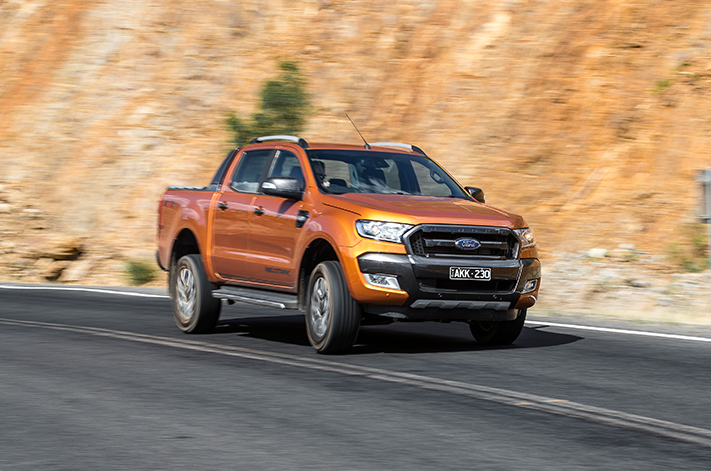
On anything bar a billiard-smooth surface, the 18-inch-wheeled Wildtrak transmits a jiggly, pattery motion up into its cabin that must surely be car-sickness kryptonite. Adding passengers improves it slightly, and so do 100km/h-plus speeds, but if this is the compromise for having a one-tonne load-carrying tray out back, then you get what you deserve if you aspire to owning a dual-cab ute as the family express.
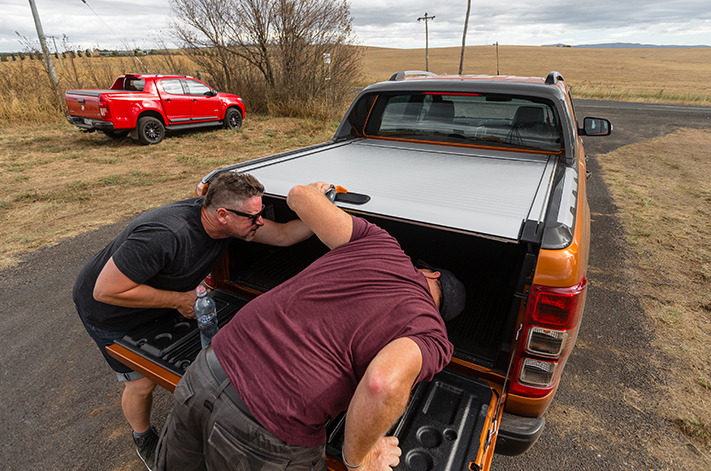
There’s an irony here, though, because the Colorado’s almost-comfortable ride is countered by a contorted driving position destined to offend almost everyone.
A near-flat cushion, tilt-only steering column, an intrusive centre-console shape, very basic electric seat adjustment, a too-high seating position, too-high brake pedal and nowhere to comfortably rest your right foot while cruise control is activated conspire to make the Colorado a body-achy experience on a long drive.
And in urban driving, the pedal positioning adds right-ankle torture to the mix. Bizarrely, the manually adjustable front passenger’s seat has better under-thigh support and is actually quite comfortable…
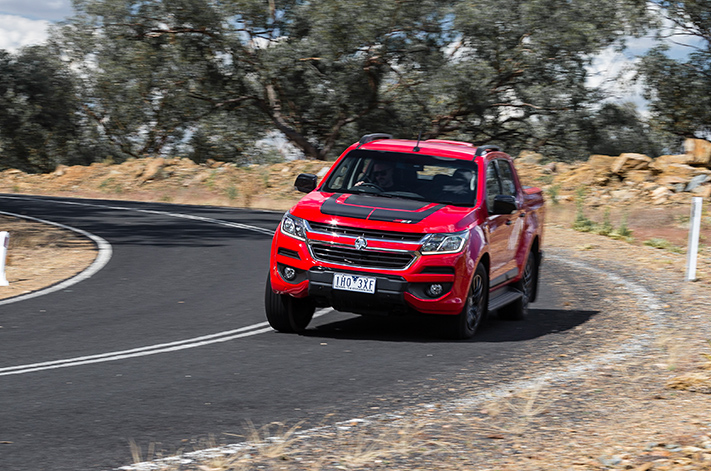
But in tighter stuff, there’s plenty of understeer to be had unless you do your best to try and minimise it, and same goes for the tyre howl from its 265/60R18 Bridgestone Dueler rubber (identical to those fitted to the Ranger).
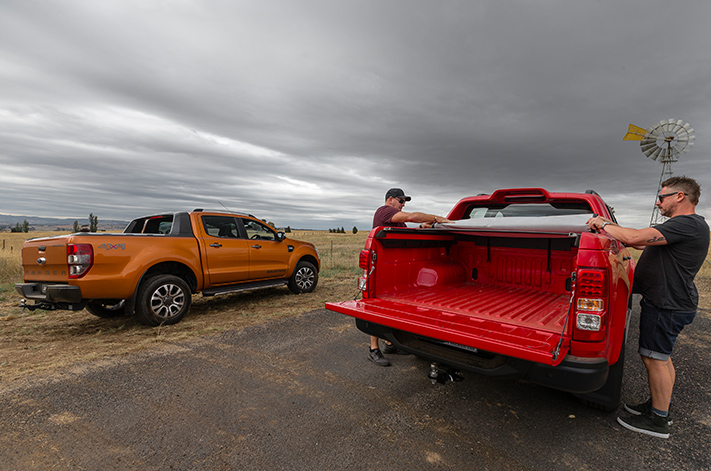
Given the level of performance on offer, it can be frustrating trying to keep the Colorado tidy on really twisty roads, and then there’s its coarse-surface road noise, which is significantly greater than the Ranger’s.
At least the Colorado’s new dashboard is a revelation compared to the old model’s tat, though the Ranger’s stitched dashboard top, padded door trims/armrests and superior seating make it feel significantly classier.
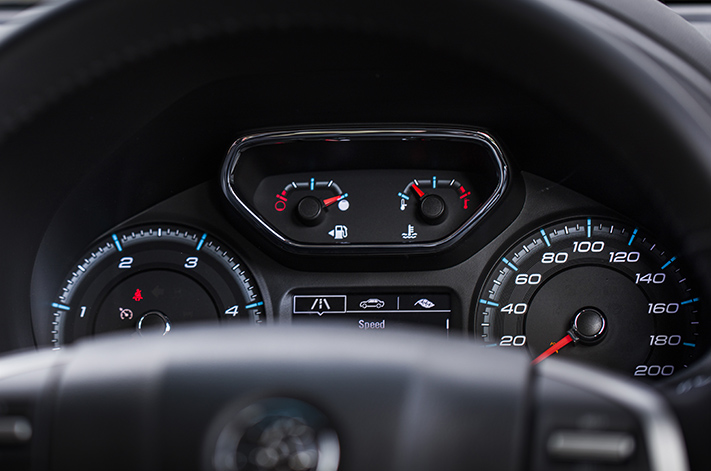
The Colorado’s GM-generic centre switches and column stalks are much easier to operate, with clear markings and a simple-to-use layout that also looks reasonably neat. But the ugly carry-over steering wheel is a sad reminder of just how rubbish the Colorado used to be before Holden dragged it into this century with this MY17 update.
What no amount of fettling can overcome, however, are the fundamentals of the Colorado’s ageing design, starting with its short wheelbase (over 120mm less than Ranger’s) relative to its overall length (longer than Ranger). The Holden’s seats are mounted higher, to the detriment of legroom and cushion support, front and rear, whereas you sink into the leggy Ranger’s lovely seats, and enjoy greater space and fields of vision.
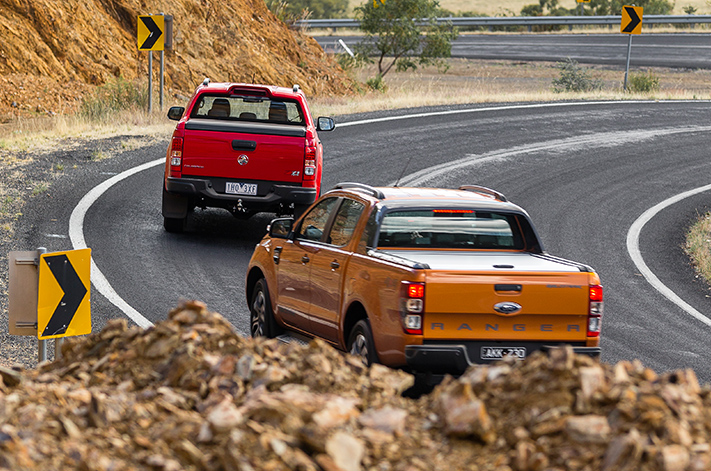
The Holden, on the other hand, simply can’t overcome its more obvious commercial-vehicle origins, and the lesser expectations of markets like Brazil, where this current generation was developed. That said, it makes the most of what it has on offer, and if you can cop its driving position, then it’s a more affordable, more efficient and inherently honest form of transport.
If it wasn’t for its terrible ride, the Ranger would walk this comparo. But the compromise of blending Ford dynamic DNA with one-tonne load-carrying ability means it isn’t such an obvious choice.
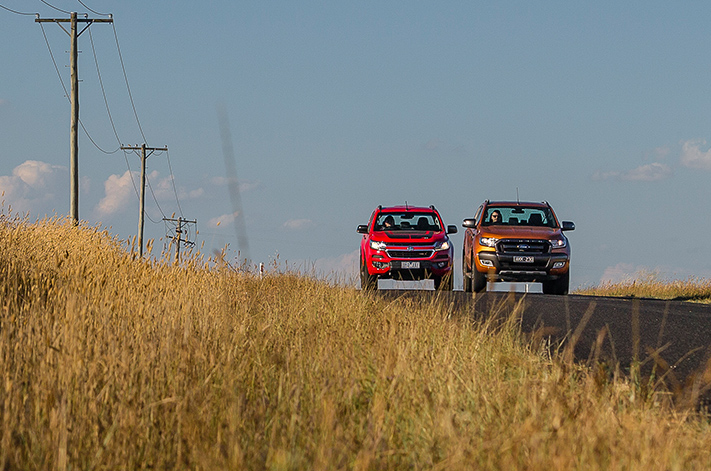
But we couldn’t help wishing we were at the wheel of a proper car – almost any new car – after nearly 700km in the Ranger and Colorado. Jack of all trades and master of none? At least they look cool.

